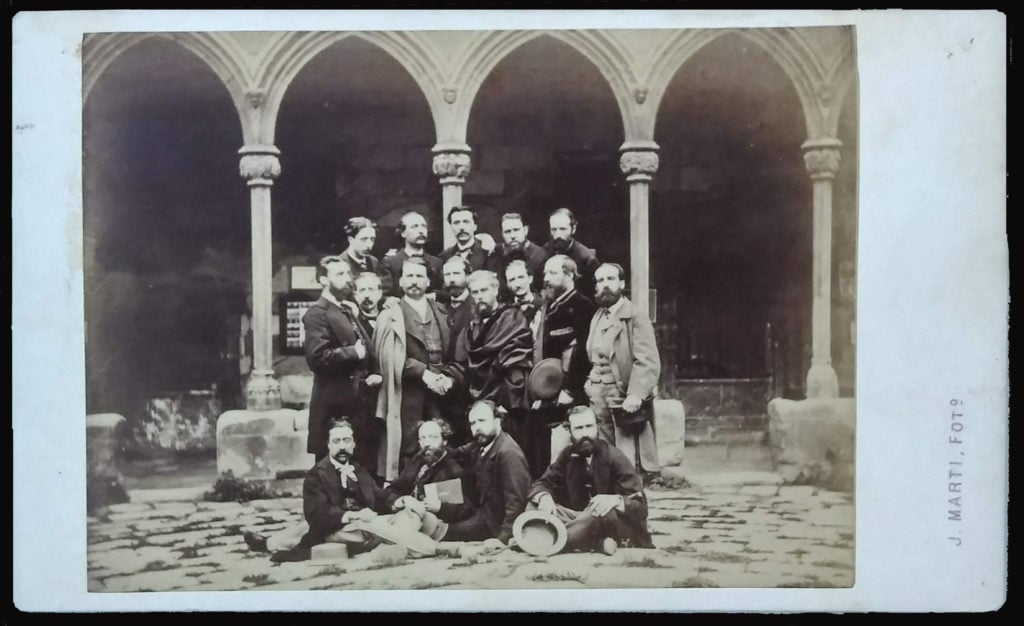Renaixença

In response to the sociolinguistic and ideological contradictions provoked by the imposition of Castilian on a society that still spoke Catalan, Catalonian intellectuals began a literary renaissance, the Renaixença. This movement was institutionalized through the organization of the Jocs Florals [Eaude, 2011], literary competitions that had been practiced in France since the 13th century but had spread into Barcelona by 1859. [Leerssen, 2015]. The Jocs Florals of 1865 saw the significant victory of a poet, Jacint Verdaguer, whose “Ode to Rafael Casanovas” referred to a Catalan figure of the War of the Spanish Succession. That victory reflected the spirit of the times: outlets such as the Jocs Florals allowed aspiring Catalan poets to take advantage of gaps in the Spanish constitution which did not place prohibitions on certain forms of expression, such as drama written and performed in the Catalan language.
These Jocs Florals served to invigorate Catalan cultural and nationalist spirit by providing an official venue for the Catalan language at a time prior to any meaningful expressions of political nationalism. As Catalonia modernized in the late 19th and early 20th centuries and became more important to the Spanish national economy, the first aspects of the modern ‘Catalan’ identity were able to coalesce. “The first known reference to the term países catalanes (made in Spanish) is in 1876,” and, as a sort of ‘pan-Catalanism’ began to come about, the spirit of political nationalism was allowed to grow [Dowling, 2019]. As a result, the growth of Barcelona as a cultural and economic capital during the Industrial Revolution, on top of the growth in prominence of Catalonia itself, gave the language, culture, and the nascent nation a base from which to grow and prosper.